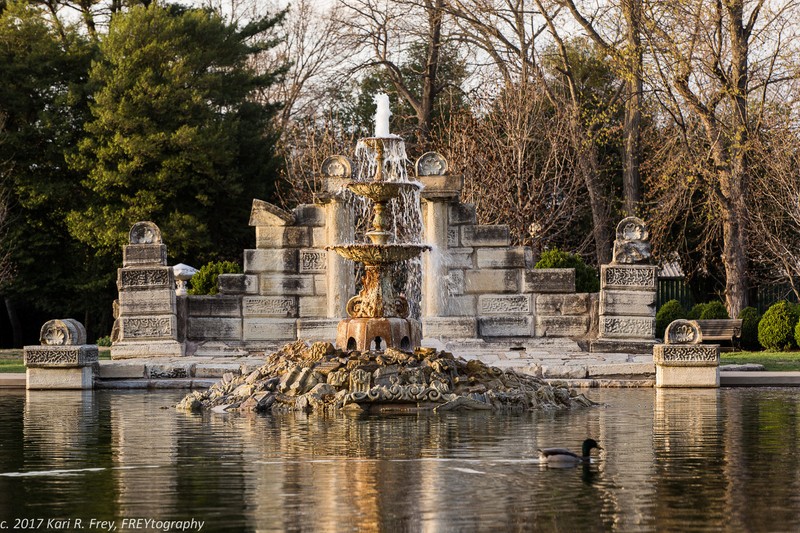Fountain Pond and Ruins
Introduction
Text-to-speech Audio
One of the premiere attractions in Tower Grove Park, the Fountain Pond and Ruins contains stones from the Old Lindell House Hotel. The historic stones were used to create a decorative fountain and rockery, featuring stonework arranged artistically within the landscape. Nestled amidst the historic stones are flower gardens and benches. There are also several waterlily ponds nearby. The site is a focal point within Tower Grove Park, which opened to the public in 1872 and is listed as a National Historic Landmark.
Images
Fountain Pond and Ruins

Backstory and Context
Text-to-speech Audio
The Fountain Pond and Ruins in Tower Grove Park contains a historical plaque embedded at the site, noting that the 'faux' ruins were created between 1872 and 1873 by Henry Shaw, the park's founder. Henry Shaw was an entrepreneur who envisioned a grand plan for a park and botanical garden in St. Louis. Both Tower Grove Park and the adjacent Missouri Botanical Garden emerged from his initial vision.
The stones that were used to create the Fountain Pond and Ruins are historic, having been repurposed from the Old Lindell House Hotel, which was destroyed in a fire in 1867. The Lindell Hotel was an ornate, six-story building constructed in iron, brick, and stone. As a premiere hotel in St. Louis, it was considered an architectural marvel. When it caught fire on March 30, 1867, its well-to-do residents were convinced that they would remain safe within the strong, solid edifice. However, this was not the case.
An article from the Missouri History Museum describes how the hotel's residents continued eating and drinking in a state of revelry, so sure were they that the hotel was fireproof. Their folly has since been compared to the passengers on the Titanic who falsely believed their ship to be unsinkable, as the Lindell Hotel did in fact end up destroyed by the fire. A new Lindell Hotel was built on the same site in 1874, yet it too caught fire in 1885, and it was eventually demolished.
Although the destruction of the Old Lindell Hotel was a great loss to the city, Henry Shaw decided that its stones could be used for the design of a decorative fountain and rockery in his Tower Grove Park. In keeping with the fashion in landscape architecture at the time, the stones were meant to appear in the style of an 'ancient' ruin from classical antiquity. Thus, the historic stones that once comprised the nineteenth-century Lindell Hotel were repurposed to evoke a decorative fountain from ancient Europe.
Sources
Natural Treasures, Tower Grove Park. Accessed October 16th, 2022. https://www.towergrovepark.org/natural1.
Homepage, Tower Grove Park. Accessed October 16th, 2022. https://www.towergrovepark.org/.
Tower Grove Park - National Historic Landmark, St. Louis City Government. Accessed October 16th, 2022. https://www.stlouis-mo.gov/government/departments/planning/cultural-resources/Tower-Grove-Park-National-Historic-Landmark.cfm.
Voight, Jason. Ruins and Fountain Pond, Hmdb. May 1st, 2020. Accessed October 16th, 2022. https://www.hmdb.org/m.asp?m=145159.
Old Lindell House Hotel, Urban Review STL. March 30th, 2017. Accessed October 16th, 2022. https://www.urbanreviewstl.com/2017/03/fire-destroyed-lindell-hotel-150-years-ago-today/.
Tebbe, Jen . A Fate of Flames, Missouri Historical Society. March 30th, 2017. Accessed October 16th, 2022. https://mohistory.org/blog/a-fate-of-flames.
Tower Grove Park
